
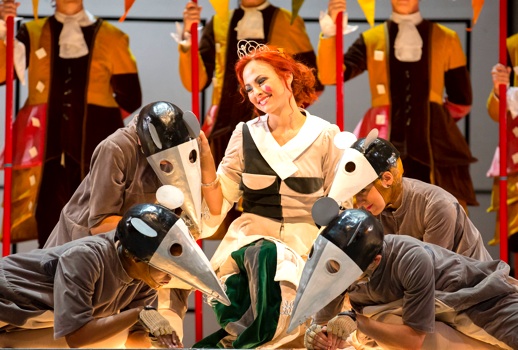
I need not have worried. This “new-to-Chicago” production, coproduced with Houston Grand Opera, Welsh National Opera, Gran Teatre del Liceu, and the Grand Theatre de Geneve, is a sheer pleasure from beginning to end. The performance was extremely well cast (sometimes a weakness at Lyric), directed with precision and panache and pace by Barcelona-based Joan Font, and featuring the fine conducting of Sir Andrew Davis and the effervescent playing of the Lyric Opera Orchestra.
It is a rare thing in opera to have a truly ensemble cast with everyone playing the same style, but this performance was on fire from everyone—we got to see both hilarity and touching humanity in all the characters.
The production was enormously enhanced by some of the best choreography and stage movement I have yet seen in opera from Spanish dancer Xevi Dorca, who created all the clever and delightful movement of the six actor/dancer rats, who were great fun whether moving scenery or dancing with glee in reaction to the scene.
Dorca also created hilarious moves for the entire men’s chorus in perfect rhythm with Rossini’s score. In his program biography, Dorca writes, “The work I do brings gesture out of the music, while helping to define the specific personalities.” In this, he succeeds entirely.
Isabel Leonard, who has occasionally seemed rather bland to me in other performances, has just the right style and personality to portray an amusing and very touching Angelina. She pairs very well with the Prince Ramiro of Lawrence Brownlee, who sings throughout with honeyed tone and remarkable vocal agility. His second act aria “Si, ritrovarla io guiro” garnered the biggest ovation of the evening.
In this Rossini piece, we have a “wicked stepfather” instead of the traditional stepmother, and here Don Magnifico is in the experienced hands of one of today’s buffo experts, Alessandro Corbelli, stylishly sung and acted. Italian baritone Vito Priante made a fine Lyric debut as Dandini, and there was strong support from the powerful voice and presence of Christian Van Horn as Alidoro.
Ryan Opera Center members Diana Newman and Annie Rosen as the stepsisters Clorinda and Tisbe started a bit over-the-top but relaxed into the roles and were fun in their frustration at losing the Prince to Angelina.
The set by Joan Guillen worked for some scenes but not others. It was clear that we were trying to avoid setting a particular historic locale (which frequently means “we didn’t have the budget to do that”), but we are left with a representational set that veers from magic to reality and doesn’t really serve either. Guillen’s colorful costumes were much more effective, as was the lighting of Albert Faura.
The opera does have its longeurs, particularly in its second half. The lengthy scene between Don Magnifico and Dandini, for instance, when Dandini reveals that he is not the prince but the valet, seems repetitive and falls flat. But once we return to the main plot, the final scene of Angelina forgiving her family for their cruelty, all ties together well. Ms. Leonard does a brilliant job with her final aria “Non piu mesta.”
Lyric Opera definitely has a hit on its hands with Cinderella. During intermission, I milled about with one of the happiest audiences I’ve seen in quite a while—everybody was smiling, and so was I. Next up: the season moves to the dark side with Wozzeck opening November 1. We’ll see who’s smiling then.
Photos: Todd Rosenberg














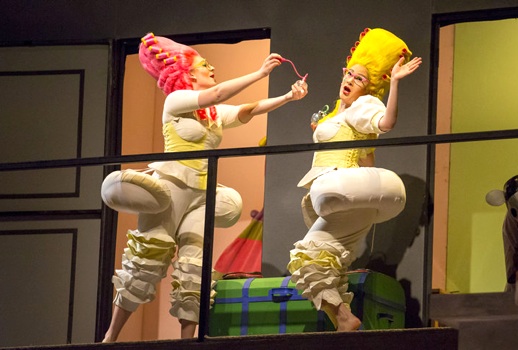
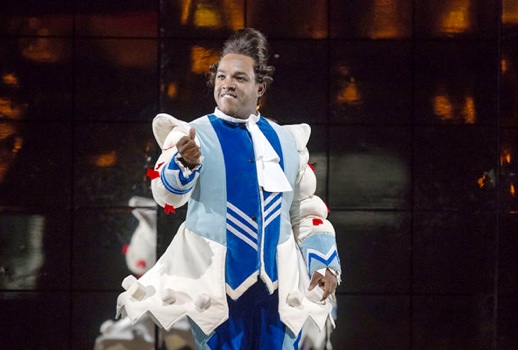

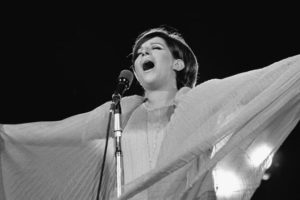

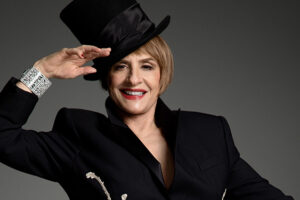





Comments